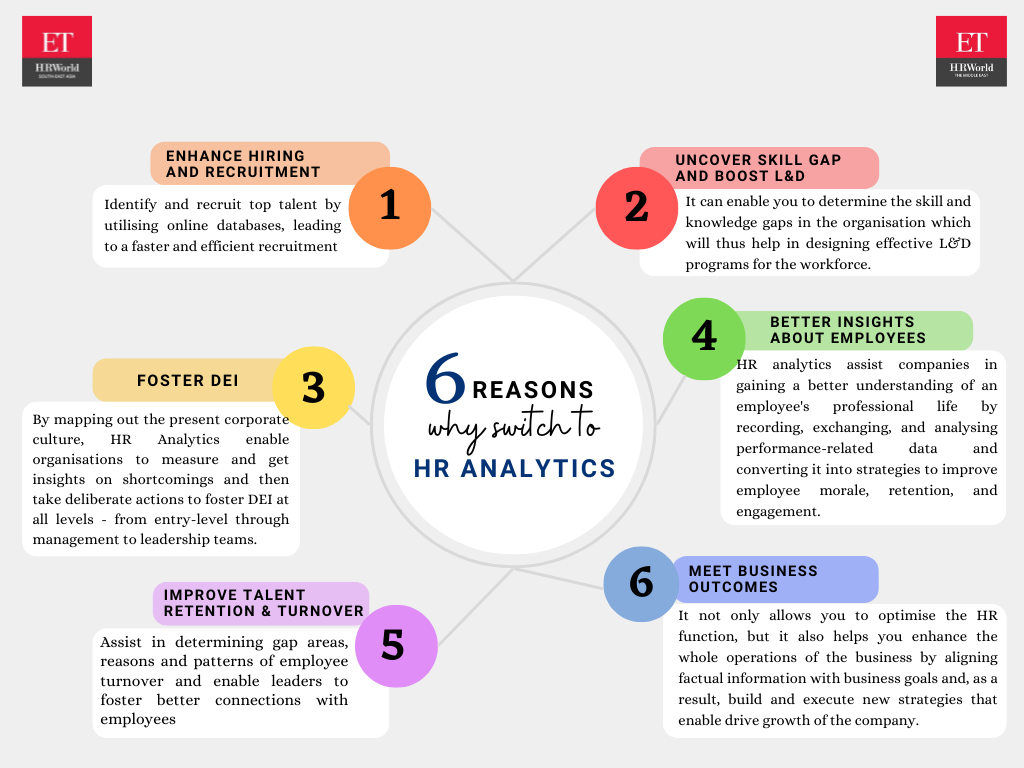Boost Effectiveness and Profitability Through Information Analytics
In today's data-driven landscape, organizations are increasingly recognizing the crucial function of information analytics in enhancing operational performance and profitability. By systematically evaluating information, organizations can discover essential insights that educate tactical choices, simplify procedures, and tailor customer experiences.
Understanding Information Analytics
In today's data-driven landscape, understanding information analytics is essential for organizations intending to improve operational efficiency and drive success. Data analytics includes the methodical computational evaluation of data collections to discover patterns, relationships, and insights that inform decision-making. By utilizing different methods, such as statistical analysis, artificial intelligence, and anticipating modeling, organizations can transform raw information right into actionable intelligence.
The process usually begins with data collection, where appropriate info is collected from numerous sources, consisting of transactional data sources, client interactions, and market fads. This data is after that cleaned and arranged to make sure accuracy and uniformity. As soon as the data is prepared, logical devices and software application are utilized to visualize the info and check out, making it possible for stakeholders to recognize anomalies and patterns.
Ultimately, understanding information analytics equips organizations to make informed decisions based on empirical evidence instead of intuition. It promotes targeted techniques that can optimize source allowance, improve consumer contentment, and boost overall efficiency. As companies significantly acknowledge the value of data-driven understandings, a solid grasp of information analytics becomes an important expertise for teams and leaders alike, placing them for sustained success in a competitive environment.

Secret Advantages for Companies
Services that take advantage of data analytics can unlock a plethora of benefits that considerably improve their procedures and earnings. One of the main benefits is enhanced decision-making. Information analytics gives workable understandings derived from real-time data, allowing businesses to make enlightened choices that align with market demands and customer choices.

In addition, data analytics fosters boosted customer experiences. By recognizing consumer habits and choices, organizations can tailor their offerings, resulting in raised satisfaction and commitment. This personalized technique often causes higher conversion rates and repeat service.
Furthermore, information analytics makes it possible for organizations to determine arising possibilities and fads. By staying in advance of the curve, companies can profit from brand-new markets and developments before their rivals.
Executing Data-Driven Methods
Successful implementation of data-driven strategies calls for a comprehensive understanding of both organizational objectives and available information sources. Organizations must first specify their goals plainly, guaranteeing alignment in between information efforts and strategic goals. This clearness enables groups to concentrate on relevant metrics and understandings that drive decision-making.
High-quality data is important for accurate evaluation, as inadequate information can lead to misdirected strategies and thrown away resources - Analytics. Organizations should develop processes for data collection, cleansing, and administration to keep data honesty.
Furthermore, cultivating a data-driven culture is vital. Employees in all degrees should be urged to leverage information in their daily procedures. Training programs and workshops can improve data proficiency, encouraging team to make enlightened decisions based on logical insights.
Devices and Technologies Review
A durable suite of innovations and tools is necessary for companies aiming to harness the complete potential of data analytics. These tools promote the collection, handling, and visualization of data, allowing organizations to obtain actionable insights.
At the fundamental degree, data monitoring systems such as SQL databases and NoSQL systems give reliable information storage space and retrieval capacities. For data processing and evaluation, shows languages like Python and R, in addition to structures such as Apache Glow, enable complex estimations and artificial intelligence applications.
Visualization devices, including Tableau and Power BI, transform raw information into user-friendly graphical layouts, making insights easily accessible to stakeholders in all levels. Additionally, cloud-based systems like Google Cloud and AWS provide scalable storage and processing options, fitting the expanding quantities of information companies run into.
For innovative analytics, predictive modeling and AI-driven solutions are increasingly adopted, enabling companies to forecast trends and enhance decision-making procedures. Incorporating these devices into existing workflows is extremely important; companies that successfully leverage this modern technology can substantially improve functional efficiency and drive profitability. Therefore, buying the right tools and modern technologies is a calculated necessary for any kind of data-driven company.
Study of Success
Leveraging information analytics has led many organizations to achieve amazing renovations in efficiency and profitability. One significant case is a this page huge retail chain that executed anticipating analytics to enhance stock administration. By evaluating historic sales information and consumer fads, the business minimized excess supply by 30%, bring about substantial expense savings and enhanced capital.
An additional instance can be discovered in the manufacturing sector, where a leading automotive manufacturer made use of data analytics to enhance its production procedures. By keeping an eye on device performance in real-time, the company identified ineffectiveness and traffic jams, resulting in a 20% rise in general equipment efficiency (OEE) This not only improved production prices yet also decreased downtime and maintenance costs.

These study highlight just how information analytics can drive tactical decision-making, optimize processes, and inevitably boost both efficiency and productivity throughout different markets.
Verdict
In final thought, the integration of data analytics into company operations provides substantial chances for improving effectiveness and earnings. By systematically analyzing information, companies can recognize inadequacies, maximize consumer experiences, and make notified choices.
In today's data-driven landscape, understanding data analytics is vital for companies aiming to improve functional effectiveness and drive success. Information analytics entails the organized look these up computational analysis of data sets to discover patterns, connections, and insights that notify decision-making. Information analytics gives actionable insights acquired from real-time information, enabling organizations to make enlightened choices that align with market needs and customer choices.
High-quality information is important for exact analysis, as poor data can lead to misguided approaches and wasted resources. Organizations should develop processes for data collection, cleaning, and monitoring to preserve data honesty.